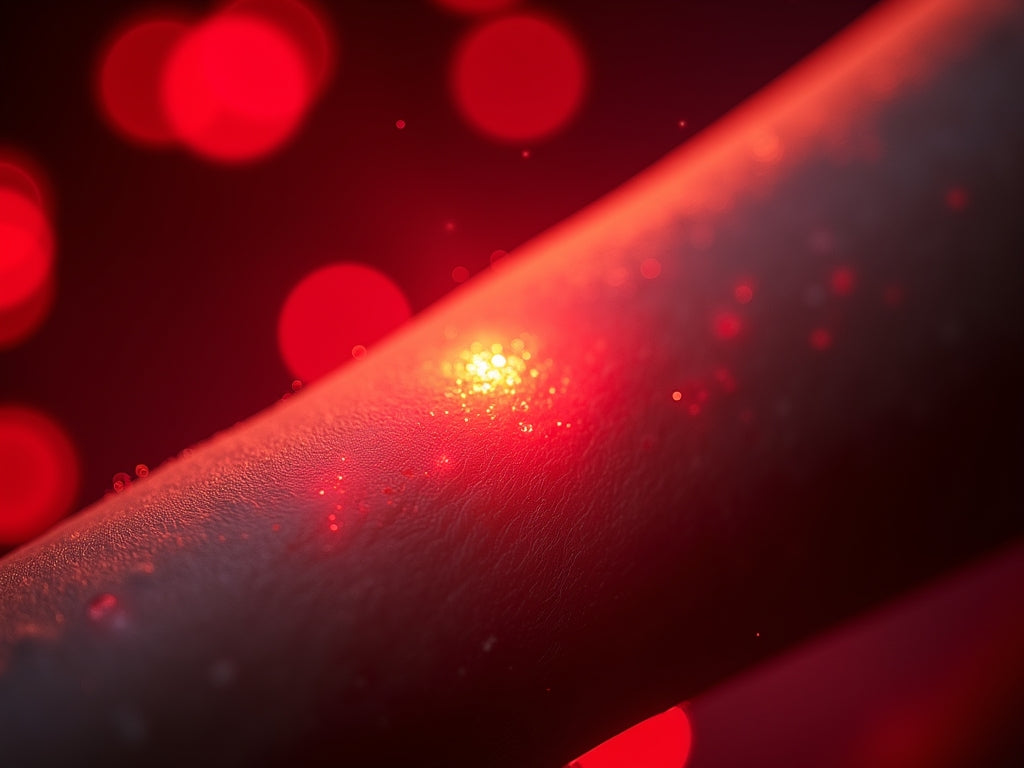
Beyond the Surface: Unleashing the Power of Red Light Therapy for Deep Tissue Healing
While the cosmetic benefits of red light therapy (RLT), such as skin rejuvenation and wrinkle reduction, are widely recognized, its therapeutic potential extends far beyond the surface. At Red Nova Lights, we believe in the profound healing capabilities of light, particularly its remarkable ability to penetrate deep into tissues, addressing injuries and conditions that lie beneath the skin’s outer layers.
For athletes, individuals recovering from surgery, or anyone suffering from musculoskeletal issues, deep tissue healing is paramount for a full and lasting recovery. Red light therapy offers a non-invasive, drug-free approach to accelerate this process, promoting repair and regeneration in muscles, tendons, ligaments, and even bones. Let’s delve into the science behind RLT's deep-reaching effects and explore how it can be a powerful tool in your healing journey.
Understanding Light Penetration: How RLT Reaches Deeper Tissues
The effectiveness of red light therapy for deep tissue healing hinges on its ability to penetrate beyond the skin's superficial layers. Different wavelengths of light have varying penetration depths. Red light, typically in the range of 630-700 nanometers (nm), can penetrate several millimeters into the skin, reaching subcutaneous tissues. However, it is near-infrared (NIR) light, ranging from approximately 800-900 nm, that truly excels at reaching deeper structures within the body.
NIR light has a longer wavelength than red light, allowing it to pass through the skin and underlying fat and muscle tissue with greater ease. This deeper penetration enables the therapeutic effects of RLT to target muscles, joints, nerves, and even bones, making it particularly beneficial for addressing a wide range of injuries and conditions.
The Cellular Mechanisms at Play in Deep Tissue Repair
Once the red and near-infrared light reaches the targeted deep tissues, it is absorbed by photoreceptor molecules within the cells, most notably cytochrome c oxidase in the mitochondria. This absorption triggers a cascade of beneficial biological responses:
-
Enhanced ATP Production: As discussed in our previous posts, RLT significantly boosts the production of adenosine triphosphate (ATP), the primary energy currency of the cell. This increased energy supply fuels all cellular processes, including those involved in tissue repair and regeneration.
-
Reduced Inflammation: Chronic inflammation is a major impediment to healing. RLT has been shown to modulate the inflammatory response by reducing the production of pro-inflammatory cytokines and increasing anti-inflammatory mediators. This helps to alleviate pain, swelling, and stiffness in deep tissues.
-
Improved Circulation: RLT stimulates the release of nitric oxide, a powerful vasodilator. This widens blood vessels, increasing blood flow to the treated area. Enhanced circulation delivers more oxygen and nutrients to damaged tissues while facilitating the removal of metabolic waste products, both crucial for the healing process.
-
Stimulated Collagen Synthesis: While known for its skin benefits, the stimulation of collagen production extends to deeper tissues as well. Collagen is a key structural protein in muscles, tendons, and ligaments, providing strength and support. RLT can help to rebuild and strengthen these tissues following injury.
-
Promotion of Tissue Regeneration: RLT encourages the proliferation and differentiation of various cell types involved in tissue repair, including fibroblasts (for connective tissue), osteoblasts (for bone), and muscle satellite cells (for muscle regeneration). This helps to accelerate the body's natural healing mechanisms.
Addressing a Spectrum of Deep Tissue Injuries with Red Light Therapy
The ability of red light therapy to penetrate deeply and stimulate cellular repair makes it a valuable tool for addressing a wide range of injuries and conditions beyond the skin's surface:
-
Muscle Tears and Strains: Whether from athletic activity or everyday strain, muscle injuries can be debilitating. RLT can accelerate the healing of torn muscle fibers, reduce pain and inflammation, and improve range of motion.
-
Tendonitis: Inflammation of the tendons, such as in conditions like tennis elbow or Achilles tendonitis, can cause significant pain and limit mobility. RLT can help to reduce inflammation, promote tendon repair, and alleviate pain.
-
Ligament Sprains and Tears: Ligaments are crucial for joint stability. Injuries to ligaments, such as ankle sprains or knee ligament tears, require significant healing time. RLT can stimulate collagen production and tissue regeneration, aiding in the repair and strengthening of damaged ligaments.
-
Bone Fractures: Emerging research suggests that red light therapy may even play a role in accelerating bone healing. By stimulating osteoblast activity (cells responsible for bone formation) and improving blood flow to the fracture site, RLT could potentially shorten the recovery time for bone fractures.
-
Joint Pain and Arthritis: While surface treatments can offer some relief, RLT's ability to penetrate into joint tissues can help to reduce inflammation and pain associated with conditions like osteoarthritis and rheumatoid arthritis. By targeting the underlying inflammation and promoting tissue repair within the joint, RLT can improve mobility and reduce discomfort.
-
Nerve Damage and Neuropathy: While still an area of ongoing research, some studies suggest that red light therapy may have the potential to promote nerve regeneration and reduce neuropathic pain by improving blood flow and stimulating nerve cell activity.
Integrating Red Nova Lights for Deep Tissue Healing
At Red Nova Lights, our panels are designed to deliver optimal wavelengths of both red and near-infrared light to maximize therapeutic benefits for deep tissue healing. When using our devices for injuries or deeper conditions:
-
Target the Affected Area: Ensure that the red light panel is positioned directly over the area of injury or pain.
-
Consider Near-Infrared Dominance: For deeper penetration, prioritize devices that offer a significant output of near-infrared light wavelengths (around 800-900 nm). Many of our panels feature a combination of red and NIR LEDs to provide comprehensive benefits.
-
Consistency is Key: Regular and consistent use is crucial for promoting deep tissue healing. Follow the recommended session times and frequency for your specific condition.
-
Combine with Other Therapies: Red light therapy can be used as a complementary therapy alongside other treatments, such as physical therapy, rest, and proper nutrition, to optimize healing outcomes.
Empowering Your Body's Natural Healing Capabilities
Red light therapy offers a powerful and non-invasive way to tap into your body's innate healing abilities, reaching beyond the surface to address injuries and conditions in deeper tissues. By understanding the science behind light penetration and cellular stimulation, you can appreciate the profound therapeutic potential of RLT for muscle tears, tendonitis, ligament damage, bone healing, and more.
At Red Nova Lights, we are dedicated to providing you with the tools you need to take control of your recovery and well-being. Explore our range of red and near-infrared light therapy panels and discover how this innovative technology can help you heal from within, getting you back to your active life faster and stronger. Go beyond the surface – unleash the power of light for true deep tissue healing.



